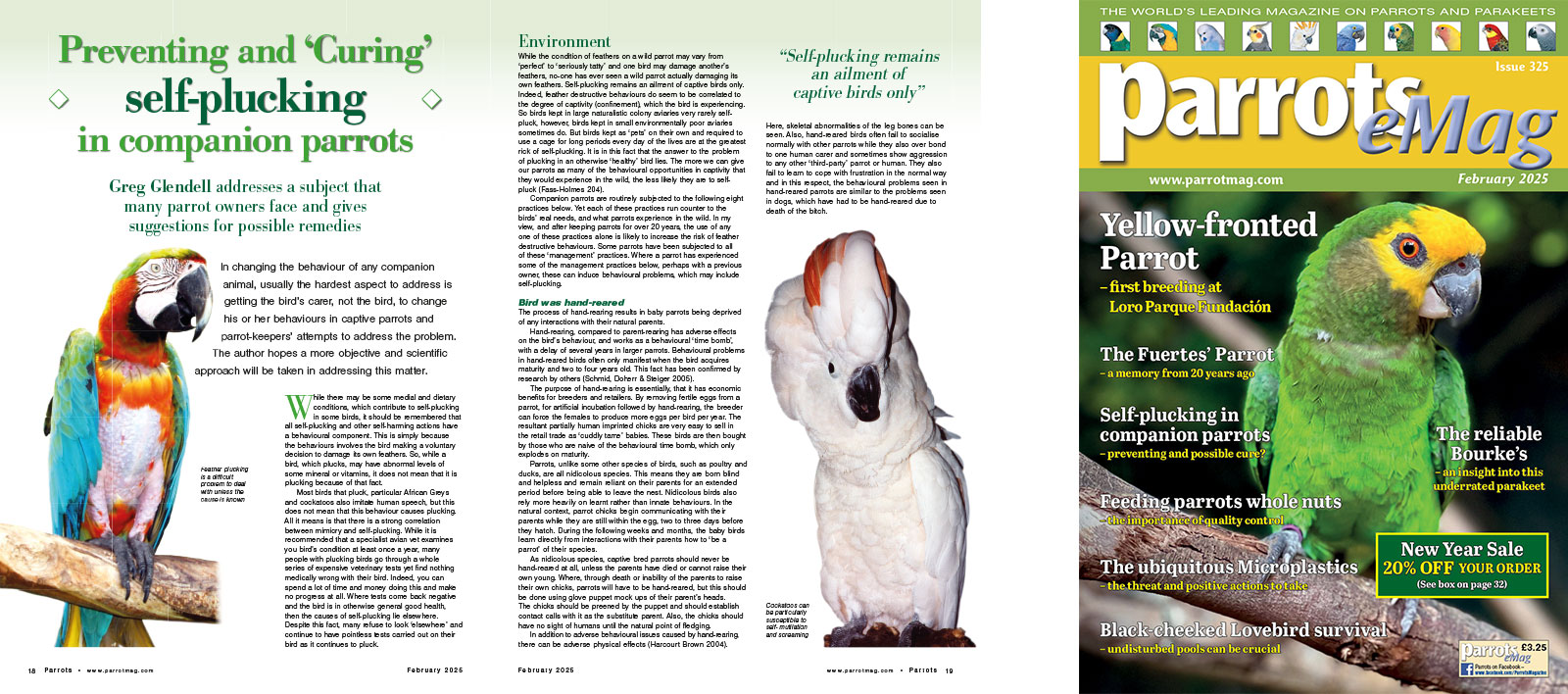
Greg Glendell addresses a subject that many parrot owners face and gives suggestions for possible remedies
In changing the behaviour of any companion animal, usually the hardest aspect to address is getting the bird’s carer, not the bird, to change his or her behaviours in captive parrots and parrot-keepers’ attempts to address the problem. The author hopes a more objective and scientific approach will be taken in addressing this matter.
While there may be some medial and dietary conditions, which contribute to self-plucking in some birds, it should be remembered that all self-plucking and other self-harming actions have a behavioural component. This is simply because the behaviours involves the bird making a voluntary decision to damage its own feathers. So, while a bird, which plucks, may have abnormal levels of some mineral or vitamins, it does not mean that it is plucking because of that fact.
Most birds that pluck, particular African Greys and cockatoos also imitate human speech, but this does not mean that this behaviour causes plucking. All it means is that there is a strong correlation between mimicry and self-plucking. While it is recommended that a specialist avian vet examines you bird’s condition at least once a year, many people with plucking birds go through a whole series of expensive veterinary tests yet find nothing medically wrong with their bird. Indeed, you can spend a lot of time and money doing this and make no progress at all. Where tests come back negative and the bird is in otherwise general good health, then the causes of self-plucking lie elsewhere. Despite this fact, many refuse to look ‘elsewhere’ and continue to have pointless tests carried out on their bird as it continues to pluck.
